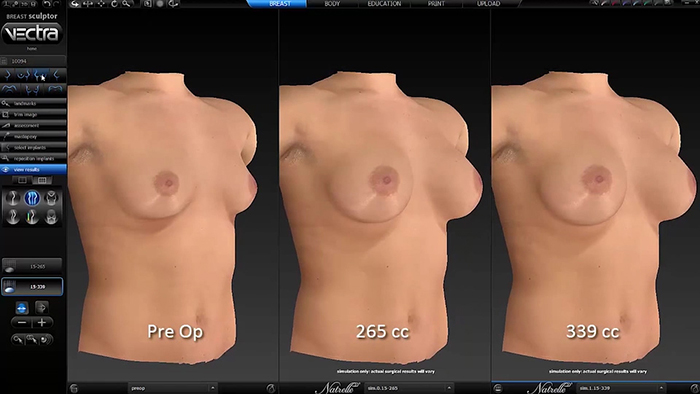When is the right time to have breast revision surgery? This is a question that flummoxes many breast augmentation patients. While a breast implant is a medical device, they don’t come with a time limit or expiration date. The right time to replace them is really going to depend on each individual patient’s circumstances.
Dr. Adam Hamawy of Princeton, NJ shares his insight into breast revision and explains the most common reasons why a patient might need to seek out the procedure.
Do You Need a Breast Revision?
Patients come in routinely to ask Dr. Hamawy if they need to have a revision surgery on their breast augmentation. They’ve had their original breast implants for 5, 10, 15 years, and they are worried. Have they had them for too long? Do they need to change them out?
His question to them is: “Is there a problem or is there something that you are unhappy about?” If there are no problems with their augmentation – no pain or physical deformations – then it’s likely that all is well. While there are certainly cases where a patient may opt for surgery in order to change her size, usually revision is reserved for problems.
Size is Number One Reason for Breast Revision Surgery
The most common reason for a patient to want breast revision surgery is because she is no longer happy with the size of her breasts. What was once in vogue may be out of style, or perhaps wisdom has affected a change in personal aesthetic. It may even be due to the wrong size implant being placed initially.
Other times, it is because life happens. Things such as pregnancy, breast feeding, weight gain/loss and hormonal changes like menopause can alter the look of a woman’s breasts. “I’ve had women who’ve had implants in for 40 years without a problem. And then some people will come in after 3 months and say, ‘I don’t like the size’,” shares Dr. Hamawy. Breast revision surgery is really dependent on the patient and what’s going on with her body.
Breast Implant Failure & Capsular Contracture
Other reasons include patients worried that something just isn’t right. One such scenario is a rupture. With saline, it’s obvious when this happens as one breast or the other will deflate. “It will be as obvious as a flat tire,” explains Hamawy. With silicone implants, it may be a little more difficult to detect a rupture. If your breasts look different or feel different, then get your implants examined. You will need an MRI or an ultrasound to know for certain. Thankfully, implant rupture is pretty rare.
Capsular contracture is another reason why patients seek breast revision surgery. The most common major complication with breast augmentation, capsular contracture is a condition in which scar tissue develops around the breast implant and changes the way that the implants look and feel. The skin and tissues of the affected breast may become tighter, the implant can change position, and the breast, in general, may look unnatural. Capsular contracture can happen as early as a few months to several years after getting your implants. It is readily treatable, but will involve a trip to the OR.
Getting it Right the First Time Prevents Revision Surgery
“There is nothing in medicine that is 100% or 0%,” says Dr. Hamawy. While there exists a small chance that any patient will need a breast revision, the best way to reduce that risk is to get it right the first time. For starters, schedule a consultation with a board certified plastic surgeon heavily experienced in breast surgery. He or she will spend a significant amount of time with you pre-operatively, educating you on your unique anatomy and options. This helps prevent mistakes such as placing the wrong size implant that may lead to otherwise avoidable breast revision surgery.
Dr. Hamawy spends anywhere from 45 minutes to an hour talking about with a prospective breast augmentation patient about:
- the full range of implant options
- the different places to put your incisions
- the placing the implant above or below the muscle
- the surgical techniques that will deliver the best results
3D Imaging Helps with Implant Size Selection
Choosing the right size implant is one of the most important steps to ensuring a successful outcome. It needs to fit not only your individual anatomy, but also your individual taste. One of the biggest pitfalls that Dr. Hamawy sees with patients is when they come in saying, “I want natural looking breasts.” What looks natural to you may not look natural to your surgeon.
This is where digital imaging can be so helpful. Hamawy utilizes Vectra 3D imaging to show patients exactly how each implant option will look on her individual body. It allows the patient to actually see what she will look like after surgery with a great degree of accuracy. “We are not talking about cup sizes, which are very inaccurate,” explains Dr. Hamawy.
It is also especially important when seeking breast implant revision surgery to find a plastic surgeon with a lot of experience, “because it is a lot more difficult to do it the second or third time than to do it the first time,” Hamawy concludes.




















Facebook
Twitter
Instagram
YouTube
RSS